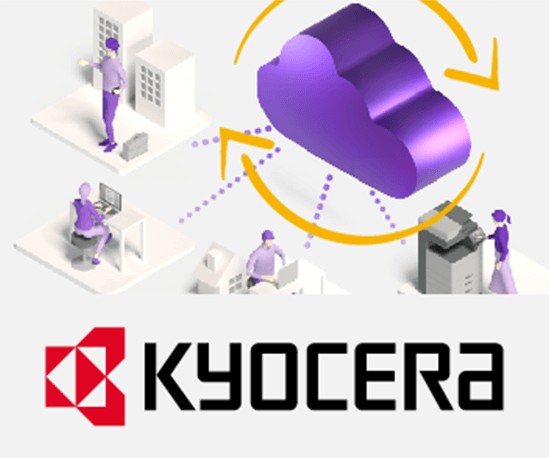
24 March 2022
AI, Machine Learning, and Deep Learning in a Nutshell
By Viola Ganter
About 30% of activities in 62% of German occupations could be automated through Artificial Intelligence. But, aside from humanoid robots in sci-fi movies, what exactly is Artificial Intelligence? Is there a difference between terms like Machine Learning and Deep Learning, or are they just buzzwords for the same thing? We explain the basic concepts and how they can be applied in business optimization processes.
What is Artificial Intelligence?
Artificial Intelligence (AI) is a broad term for a variety of concepts, the definition of which varies across industries and research fields. In layman’s terms, AI is often described as machines mimicking human cognition. This, however, both under- and overestimates what AI can do. A more accurate description of Artificial Intelligence is that of a system that “perceives” its environment (meaning data input) and takes action to maximize its chance of achieving its goal.
Areas of Artificial Intelligence range from following a basic set of logical rules to even completing small creative tasks. However, most business applications in AI are based on Machine Learning, which is why the terms Artificial Intelligence and Machine Learning are often used interchangeably in the business context.

Both are a type of Artificial Intelligence.
What is Machine Learning?
Machine Learning (ML) is a specific kind of AI that reacts to its environment without needing individual rules for every new situation. At the core of ML, there is a mathematical function (or several). The objective of that function is to make stochastic predictions based on input data. A Machine Learning algorithm “learns” how to make the best prediction by adjusting the parameters of the function to the input data.
For a simplified analogy: Imagine a small child learning the concept of a bird. At first, it might refer to any animal as “bird”. After a while, however, the child will have learned to pay attention to whether the animal in question has feathers, a beak, or a high-pitched tweet. It will have learned that these characteristics are important to determine the probability of an animal being a bird. Other factors, such as whether or not it has eyes, are less important in making that determination. Machine Learning works in a very similar way.
Examples of Machine Learning in Enterprise Information Management
Machine Learning has many uses, but is particularly helpful for digitizing existing paper documents. Here are some examples of how Machine Learning is making business processes easier:
- Document classification. Based on the words, names, or logos (etc.), a machine learning algorithm can automatically sort thousands of scanned documents into categories, reducing the administrative effort required by humans. This is useful for invoices, contracts, letters, and other documents that can be sorted by type, company, year, and so on.
- Speech recognition. Algorithms transcribe sound waves into written language, which makes video and audio files searchable and ready for further information extraction.
- Topic modelling. This is a great help for anybody who faces mountains of unknown documents. Legal discovery, for example, can contain thousands of documents that must be read and evaluated. While topic modelling can’t give you the exact topics discussed in each paragraph, it can provide a broad idea of the general topics discussed in the discovery, making it easier for law firms to divide and conquer.
What is Deep Learning?
Deep Learning is based on a Machine Learning model known as a Neural Network. Again, at its core, there is a mathematical function – or, more precisely, several functions lined up beside each other to form a layer of “neurons”. Deep Learning relies on networks that have so-called “hidden layers”, meaning several layers of neurons that are stacked between the input and output layer.
The idea behind Neural Networks is to simulate the decision-making process in the brain: Based on its input, each neuron will decide to fire a yes or no response, which may then feed into the decision-making of other neurons. This combination of “micro-decisions” leads to incredibly powerful learning and is the basis of many of the more well-known examples of AI, such as smart speakers or social robots.
Examples of Deep Learning in Information Management
- Chatbots. We all know them by now as there are readily available plugins that can be added to a website with little effort. Chatbots are great additions to customer support because they can help determine what a customer is looking for, even if they haven’t figured it out themselves yet.
- Auto-translate. Thanks to Deep Learning, automatic translation has now become reliable enough that it can be used in most everyday situations. Not only does this make sending emails to international clients less awkward, but more importantly, it provides instant access to knowledge silos that may arise during international collaborations.
- Content creation. Until recently, creative tasks appeared to be an impassable barrier for Artificial Intelligence. Deep Learning adds a new dimension to information management by automating content creation with tools such as automatic copywriting, illustration, and video generation. In the coming years, enterprises are likely to see an increase in AI-created content.
Machine Learning or Deep Learning – which is better?
Both general Machine Learning and Deep Learning, in particular, have strengths and weaknesses. Deep Learning is capable of mastering complex tasks that necessitate creative problem-solving abilities; however, it is computationally demanding.
Other Machine Learning techniques (for example, clustering algorithms and support vector machines) are easier to implement, train, and execute. However, the tasks they can perform are limited. They are powerful tools for pattern recognition and categorization tasks, and they can be easily integrated into a wide range of on-premises software architectures.
Conclusion
There are many types of Artificial Intelligence. Some of them are lightweight, easily implemented algorithms that still have great potential to optimize business processes. Some are based on data-heavy, complex neural networks that require highly scalable environments. Still, they are worth looking out for, as they can reach super-human performance even in creative tasks and are sure to transform the way we do Enterprise Information Management in the future.
You might also like
Do you have any further questions?
Get in touch with us!













